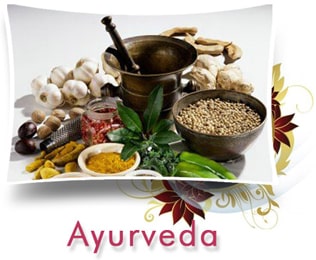
Overview
Ayurveda is ancient system of Medicine in world. The meaning of Ayurveda is “Science of Life.” Ayurveda is originated from two Sanskrit words “Ayur” (life) and “Veda” (knowledge). It is broad system of treatment with different therapies and herbal remedies for treating different ailments. In Ayurveda, human beings are treated on the basis of their physical and mental set up and same medicines are not recommended for different persons. Ayurveda follows a principle ‘One man’s food is another man’s poison’. Ayurveda develops different branches according to need of medical world. It mainly uses two ways- Curative and Preventive.
Preventive measures mainly focus on prevention of disease. It gives more importance to regular practice (Din Acharya) to prevent the disease rather than to treat health issues.
Curative methods deal with the treatment of diseased conditions.
Eight Branches of Ayurveda
Ayurveda is categorized into eight different branches and collectively it is known as Ashtang Ayurveda. Ashtang means eight parts or limbs. The basic mode of treatment of all these is same.
“Kaaya baala graha urdhvaanga shalya damshtra jara vrshan Ashtau angaani tasyaahuh chikitsa yeshu samsthitaah.” – Ashtanga hrdayam
The Eight Branches of Ayurveda are Explained Below:
- Kaaya Chikitsa (Internal medicine)
- Baala Chikitsa (Pediatrics treatment)
- Graha Chikitsa or Bhoot Vidya (Psychiatry)
- Urdhyaanga Chikitsa (Treatment of eyes, nose, throat, head related diseases)
- Shalyaroga Chikitsa (Surgery)
- Damstra Chikitsa – Agad Tantra (Toxicology)
- Jara Chikitsa – Rasayana (Geriatrics)
- Vrishya Chikitsa or Vajjikarana (Aphrodisiac therapy)

1. Kaaya Chikitsa
Kaaya means “agni” – the digestive fire in the body. It is holistic approach of medicine which is mainly helpful in treatment of whole body. Kaaya Chikitsa is derived from Sanskrit word “Chin- Chayane” which means to collect. This collection refers to food. Kaaya mainly helps in food digestion and metabolism. So it is considered as Kaaya Chikitsa that means treatment of disease due to metabolism problem in body. Imbalance of kaaya may occurs which result in many diseases. It deals with treatment of general diseases like fever, cold, cough and many others by balancing agni in body. Treatment may be internal or external.
Internal Treatment:-
The medicines are given orally or through Sodhana i.e. eliminative procedures of Panchakarma means five treatments which are Vamana (Emesis), Virechana (purgation), Basti (Enema), Nasya (Nasal medications) and Raktamokshna (Blood-letting).
External Treatment:-
It involves local application of creams (lepan), lotions and ointments.
2. Baala Chikitsa
It is also called Kaumara Bhritya. Baala Chikitsa is the branch of Ayurveda which is concerned with treatment of children. In this the care of baby and mother is discussed. This branch deals with child care and it includes diseases of children, causes of vitiation of breast milk, diseases caused by this vitiated milk and their treatment, any infection in child. It also includes methods of conception, age, gender, childhood diseases.
To Treat Children Three Things must be Remembered:-
- Children cannot explain their problem.
- Dose regimen is different for children.
- Medicines must be palatable.
According to Acharya Harita, antenatal care and management of puerperium (end stage of pregnancy) is also included in this branch.
3. Graha Chikitsa
It is the branch of ayurvedic science which deals with treatment of diseases of mind. Management of psychiatric disease like Unmada and Apasmara are also under this branch. Besides herbs, diet chart, yoga therapy, deep-breathing and mantra chikitsa etc are used.
4. Urdhyaanga Chikitsa
It is also called Shalakaya Tantra. The Physician uses a special instrument called Shalaka. It mainly deals with treatment of upper part of body that are eyes, nose, throat and ears.
5. Shalyaroga Chikitsa
Shalya means foreign, roga means disease. It is also mentioned in Susruta samhita which is synonym for surgery. This branch deals with surgical procedures. This is done with various instruments like scissors, scalpel etc. Various operations like cataract, kidney stones, piles or even perforations of abdomen were described by Sushrutacharya. Sushruta is considered as father of Plastic Surgery.
6. Damstra Chikitsa
This branch deals with study and treatment of toxins or poisons like air and water pollution, toxins in animals, minerals and vegetables.
7. Jara Chikitsa
Jara means old age. It is also known as Rasayana means rejuvenating property. It deals with various diseases associated with aging process. Its main aim is to achieve long and healthy life. It includes different aspects like longevity, memory, complexion, glow, strength of senses.
8. Vajjikaran Chikitsa
(Vaji – Horse) As per Ayurveda, sex is one of the important aspect of life this branch deals with pleasure and satisfaction of sex. It also deals with the diseased conditions related to infertility problem and problems with shukra dhatus or vital reproductive fluid in the body.
